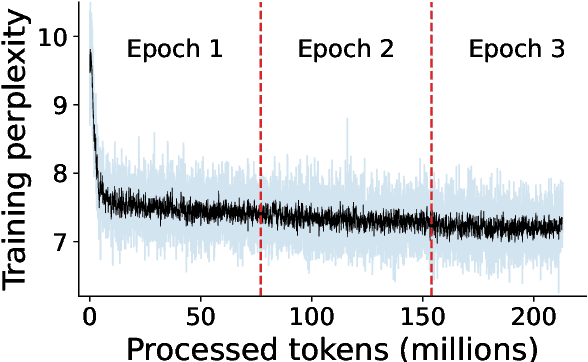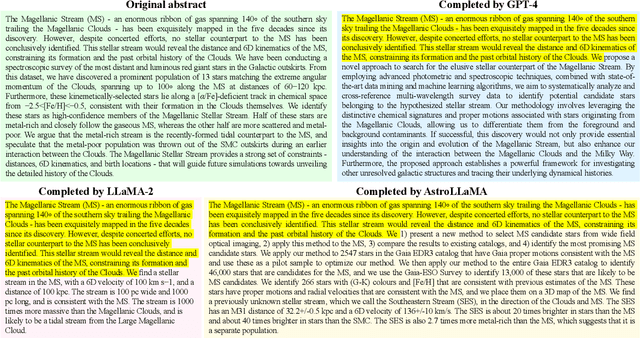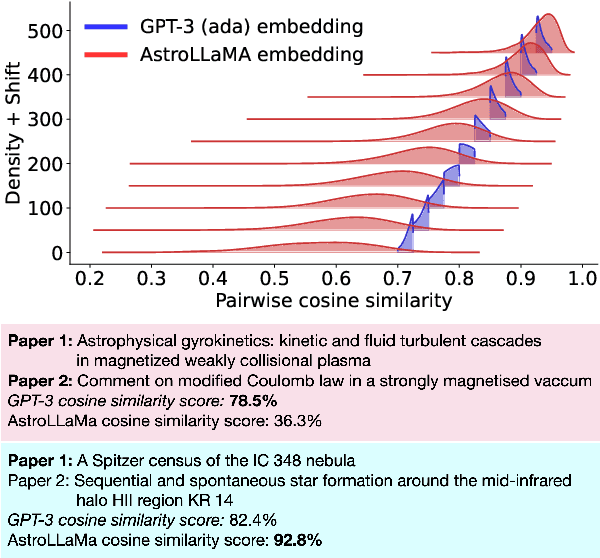Thang Bui
Rao-Blackwellised Reparameterisation Gradients
Jun 09, 2025Abstract:Latent Gaussian variables have been popularised in probabilistic machine learning. In turn, gradient estimators are the machinery that facilitates gradient-based optimisation for models with latent Gaussian variables. The reparameterisation trick is often used as the default estimator as it is simple to implement and yields low-variance gradients for variational inference. In this work, we propose the R2-G2 estimator as the Rao-Blackwellisation of the reparameterisation gradient estimator. Interestingly, we show that the local reparameterisation gradient estimator for Bayesian MLPs is an instance of the R2-G2 estimator and Rao-Blackwellisation. This lets us extend benefits of Rao-Blackwellised gradients to a suite of probabilistic models. We show that initial training with R2-G2 consistently yields better performance in models with multiple applications of the reparameterisation trick.
Sparks of Science: Hypothesis Generation Using Structured Paper Data
Apr 17, 2025Abstract:Generating novel and creative scientific hypotheses is a cornerstone in achieving Artificial General Intelligence. Large language and reasoning models have the potential to aid in the systematic creation, selection, and validation of scientifically informed hypotheses. However, current foundation models often struggle to produce scientific ideas that are both novel and feasible. One reason is the lack of a dedicated dataset that frames Scientific Hypothesis Generation (SHG) as a Natural Language Generation (NLG) task. In this paper, we introduce HypoGen, the first dataset of approximately 5500 structured problem-hypothesis pairs extracted from top-tier computer science conferences structured with a Bit-Flip-Spark schema, where the Bit is the conventional assumption, the Spark is the key insight or conceptual leap, and the Flip is the resulting counterproposal. HypoGen uniquely integrates an explicit Chain-of-Reasoning component that reflects the intellectual process from Bit to Flip. We demonstrate that framing hypothesis generation as conditional language modelling, with the model fine-tuned on Bit-Flip-Spark and the Chain-of-Reasoning (and where, at inference, we only provide the Bit), leads to improvements in the overall quality of the hypotheses. Our evaluation employs automated metrics and LLM judge rankings for overall quality assessment. We show that by fine-tuning on our HypoGen dataset we improve the novelty, feasibility, and overall quality of the generated hypotheses. The HypoGen dataset is publicly available at huggingface.co/datasets/UniverseTBD/hypogen-dr1.
Sparse Autoencoders Enable Scalable and Reliable Circuit Identification in Language Models
May 21, 2024Abstract:This paper introduces an efficient and robust method for discovering interpretable circuits in large language models using discrete sparse autoencoders. Our approach addresses key limitations of existing techniques, namely computational complexity and sensitivity to hyperparameters. We propose training sparse autoencoders on carefully designed positive and negative examples, where the model can only correctly predict the next token for the positive examples. We hypothesise that learned representations of attention head outputs will signal when a head is engaged in specific computations. By discretising the learned representations into integer codes and measuring the overlap between codes unique to positive examples for each head, we enable direct identification of attention heads involved in circuits without the need for expensive ablations or architectural modifications. On three well-studied tasks - indirect object identification, greater-than comparisons, and docstring completion - the proposed method achieves higher precision and recall in recovering ground-truth circuits compared to state-of-the-art baselines, while reducing runtime from hours to seconds. Notably, we require only 5-10 text examples for each task to learn robust representations. Our findings highlight the promise of discrete sparse autoencoders for scalable and efficient mechanistic interpretability, offering a new direction for analysing the inner workings of large language models.
Cross-Data Knowledge Graph Construction for LLM-enabled Educational Question-Answering System: A~Case~Study~at~HCMUT
Apr 14, 2024



Abstract:In today's rapidly evolving landscape of Artificial Intelligence, large language models (LLMs) have emerged as a vibrant research topic. LLMs find applications in various fields and contribute significantly. Despite their powerful language capabilities, similar to pre-trained language models (PLMs), LLMs still face challenges in remembering events, incorporating new information, and addressing domain-specific issues or hallucinations. To overcome these limitations, researchers have proposed Retrieval-Augmented Generation (RAG) techniques, some others have proposed the integration of LLMs with Knowledge Graphs (KGs) to provide factual context, thereby improving performance and delivering more accurate feedback to user queries. Education plays a crucial role in human development and progress. With the technology transformation, traditional education is being replaced by digital or blended education. Therefore, educational data in the digital environment is increasing day by day. Data in higher education institutions are diverse, comprising various sources such as unstructured/structured text, relational databases, web/app-based API access, etc. Constructing a Knowledge Graph from these cross-data sources is not a simple task. This article proposes a method for automatically constructing a Knowledge Graph from multiple data sources and discusses some initial applications (experimental trials) of KG in conjunction with LLMs for question-answering tasks.
Measuring Sharpness in Grokking
Feb 14, 2024Abstract:Neural networks sometimes exhibit grokking, a phenomenon where perfect or near-perfect performance is achieved on a validation set well after the same performance has been obtained on the corresponding training set. In this workshop paper, we introduce a robust technique for measuring grokking, based on fitting an appropriate functional form. We then use this to investigate the sharpness of transitions in training and validation accuracy under two settings. The first setting is the theoretical framework developed by Levi et al. (2023) where closed form expressions are readily accessible. The second setting is a two-layer MLP trained to predict the parity of bits, with grokking induced by the concealment strategy of Miller et al. (2023). We find that trends between relative grokking gap and grokking sharpness are similar in both settings when using absolute and relative measures of sharpness. Reflecting on this, we make progress toward explaining some trends and identify the need for further study to untangle the various mechanisms which influence the sharpness of grokking.
Grokking Beyond Neural Networks: An Empirical Exploration with Model Complexity
Oct 26, 2023Abstract:In some settings neural networks exhibit a phenomenon known as grokking, where they achieve perfect or near-perfect accuracy on the validation set long after the same performance has been achieved on the training set. In this paper, we discover that grokking is not limited to neural networks but occurs in other settings such as Gaussian process (GP) classification, GP regression and linear regression. We also uncover a mechanism by which to induce grokking on algorithmic datasets via the addition of dimensions containing spurious information. The presence of the phenomenon in non-neural architectures provides evidence that grokking is not specific to SGD or weight norm regularisation. Instead, grokking may be possible in any setting where solution search is guided by complexity and error. Based on this insight and further trends we see in the training trajectories of a Bayesian neural network (BNN) and GP regression model, we make progress towards a more general theory of grokking. Specifically, we hypothesise that the phenomenon is governed by the accessibility of certain regions in the error and complexity landscapes.
AstroLLaMA: Towards Specialized Foundation Models in Astronomy
Sep 12, 2023


Abstract:Large language models excel in many human-language tasks but often falter in highly specialized domains like scholarly astronomy. To bridge this gap, we introduce AstroLLaMA, a 7-billion-parameter model fine-tuned from LLaMA-2 using over 300,000 astronomy abstracts from arXiv. Optimized for traditional causal language modeling, AstroLLaMA achieves a 30% lower perplexity than Llama-2, showing marked domain adaptation. Our model generates more insightful and scientifically relevant text completions and embedding extraction than state-of-the-arts foundation models despite having significantly fewer parameters. AstroLLaMA serves as a robust, domain-specific model with broad fine-tuning potential. Its public release aims to spur astronomy-focused research, including automatic paper summarization and conversational agent development.
Adversarial Fine-Tuning of Language Models: An Iterative Optimisation Approach for the Generation and Detection of Problematic Content
Aug 26, 2023Abstract:In this paper, we tackle the emerging challenge of unintended harmful content generation in Large Language Models (LLMs) with a novel dual-stage optimisation technique using adversarial fine-tuning. Our two-pronged approach employs an adversarial model, fine-tuned to generate potentially harmful prompts, and a judge model, iteratively optimised to discern these prompts. In this adversarial cycle, the two models seek to outperform each other in the prompting phase, generating a dataset of rich examples which are then used for fine-tuning. This iterative application of prompting and fine-tuning allows continuous refinement and improved performance. The performance of our approach is evaluated through classification accuracy on a dataset consisting of problematic prompts not detected by GPT-4, as well as a selection of contentious but unproblematic prompts. We show considerable increase in classification accuracy of the judge model on this challenging dataset as it undergoes the optimisation process. Furthermore, we show that a rudimentary model \texttt{ada} can achieve 13\% higher accuracy on the hold-out test set than GPT-4 after only a few rounds of this process, and that this fine-tuning improves performance in parallel tasks such as toxic comment identification.
Steering Language Generation: Harnessing Contrastive Expert Guidance and Negative Prompting for Coherent and Diverse Synthetic Data Generation
Aug 17, 2023Abstract:Large Language Models (LLMs) hold immense potential to generate synthetic data of high quality and utility, which has numerous applications from downstream model training to practical data utilisation. However, contemporary models, despite their impressive capacities, consistently struggle to produce both coherent and diverse data. To address the coherency issue, we introduce contrastive expert guidance, where the difference between the logit distributions of fine-tuned and base language models is emphasised to ensure domain adherence. In order to ensure diversity, we utilise existing real and synthetic examples as negative prompts to the model. We deem this dual-pronged approach to logit reshaping as STEER: Semantic Text Enhancement via Embedding Repositioning. STEER operates at inference-time and systematically guides the LLMs to strike a balance between adherence to the data distribution (ensuring semantic fidelity) and deviation from prior synthetic examples or existing real datasets (ensuring diversity and authenticity). This delicate balancing act is achieved by dynamically moving towards or away from chosen representations in the latent space. STEER demonstrates improved performance over previous synthetic data generation techniques, exhibiting better balance between data diversity and coherency across three distinct tasks: hypothesis generation, toxic and non-toxic comment generation, and commonsense reasoning task generation. We demonstrate how STEER allows for fine-tuned control over the diversity-coherency trade-off via its hyperparameters, highlighting its versatility.
q-Paths: Generalizing the Geometric Annealing Path using Power Means
Jul 01, 2021



Abstract:Many common machine learning methods involve the geometric annealing path, a sequence of intermediate densities between two distributions of interest constructed using the geometric average. While alternatives such as the moment-averaging path have demonstrated performance gains in some settings, their practical applicability remains limited by exponential family endpoint assumptions and a lack of closed form energy function. In this work, we introduce $q$-paths, a family of paths which is derived from a generalized notion of the mean, includes the geometric and arithmetic mixtures as special cases, and admits a simple closed form involving the deformed logarithm function from nonextensive thermodynamics. Following previous analysis of the geometric path, we interpret our $q$-paths as corresponding to a $q$-exponential family of distributions, and provide a variational representation of intermediate densities as minimizing a mixture of $\alpha$-divergences to the endpoints. We show that small deviations away from the geometric path yield empirical gains for Bayesian inference using Sequential Monte Carlo and generative model evaluation using Annealed Importance Sampling.
 Add to Chrome
Add to Chrome Add to Firefox
Add to Firefox Add to Edge
Add to Edge